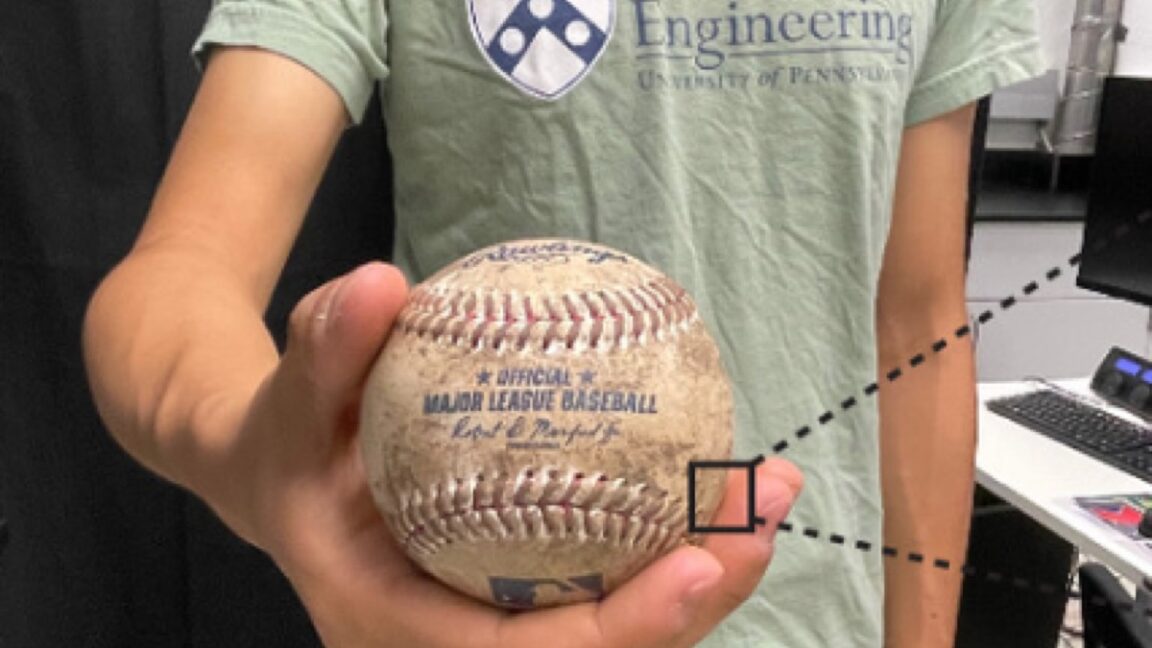Credit:
S. Pradeep et al., 2024
“Magic mud” composition and microstructure: (top right) a clean baseball surface; (bottom right) a mudded baseball.
Credit:
S. Pradeep et al., 2024
Pradeep et al. found that magic mud’s particles are primarily silt and clay, with a bit of sand and organic material. The stickiness comes from the clay, silt, and organic matter, while the sand makes it gritty. So the mud “has the properties of skin cream,” they wrote. “This allows it to be held in the hand like a solid but also spread easily to penetrate pores and make a very thin coating on the baseball.”
When the mud dries on the baseball, however, the residue left behind is not like skin cream. That’s due to the angular sand particles bonded to the baseball by the clay, which can increase surface friction by as much as a factor of two. Meanwhile, the finer particles double the adhesion. “The relative proportions of cohesive particulates, frictional sand, and water conspire to make a material that flows like skin cream but grips like sandpaper,” they wrote.
Despite its relatively mundane components, the magic mud nonetheless shows remarkable mechanical behaviors that the authors think would make it useful in other practical applications. For instance, it might replace synthetic materials as an effective lubricant, provided the gritty sand particles are removed. Or it could be used as a friction agent to improve traction on slippery surfaces, provided one could define the optimal fraction of sand content that wouldn’t diminish its spreadability. Or it might be used as a binding agent in locally sourced geomaterials for construction.
“As for the future of Rubbing Mud in Major League Baseball, unraveling the mystery of its behavior does not and should not necessarily lead to a synthetic replacement,” the authors concluded. “We rather believe the opposite; Rubbing Mud is a nature-based material that is replenished by the tides, and only small quantities are needed for great effect. In a world that is turning toward green solutions, this seemingly antiquated baseball tradition provides a glimpse of a future of Earth-inspired materials science.”
DOI: PNAS, 2024. 10.1073/pnas.241351412 (About DOIs).

